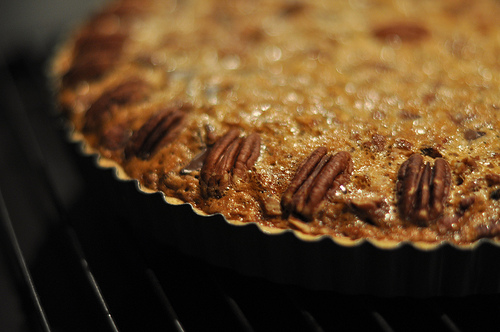
Pecan pie was never the cheapest pie at the holiday table. But pecan prices have soared in the last few years, forcing many bakeries to price their pies as high as $34 each in some places.
What's going on? It's a combination of the usual bad farming accidents, plus China's sudden voracious appetite for pecans. Pecans, which are native to North America, were not a thing in China until 2006, when a New Mexico company at a trade show introduced a group of Chinese buyers to the delicious pecan. The pecan hit China in force, becoming a fad similar to the fads for quinoa or pomegranate here in the United States. Between 2006 and 2009, pecans went from being virtually unheard of in China to ubiquitous in every convenience store, grocery store, and food stand.
Pecans are still basically only grown in the United States. And unlike a quick-turnaround crop like wheat or soybeans, it takes a long time to ramp up pecan production. You have to plant the trees, then wait years for them to mature before they start producing nuts. The basic laws of supply and demand have driven up the price of pecans to more than triple what they were less than a decade ago.
To make matters worse, the Texas pecan crop was hit hard by inclement weather this year, which has increased the scarcity of pecans - as well as the price.
If you want to make pecan pie for Christmas but you balk at the prices, you might want to check out some other alternatives. Walnut pie is virtually identical to pecan pie, and just as easy to make. There's also Chess pie, a traditional Southern dessert which is basically pecan pie without the pecans.
Or you can really go off the beaten path and try this faux pecan pie. It looks and tastes just like the real thing, but it's made with pretzel pieces instead of pecans. (Clever!)
Image courtesy Flickr/cyclonebill

0 comments